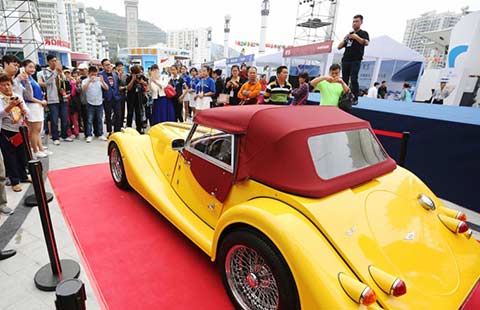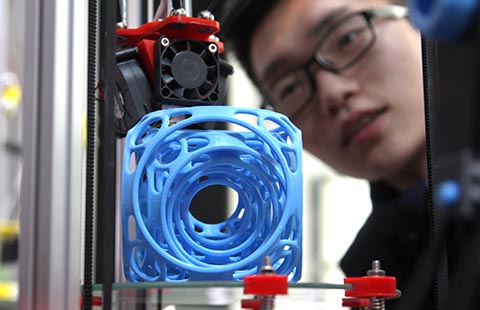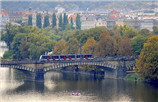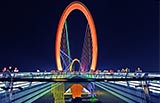Cathay Pacific upgrades long haul fleet
By Cecily Liu in London (chinadaily.com.cn) Updated: 2012-10-10 16:34Cathay Pacific, Hong Kong's flagship carrier, is upgrading to a more fuel efficient long haul aircraft fleet as global fuel costs remain high.
Two of the company's Boeing 747s on its Hong Kong to London route were recently upgraded to Boeing 777s and there are plans to upgrade a third Boeing 747 early next year.
"Fuel prices have remained particularly high this year, so we have decided to change old aircraft for more fuel efficient ones," Roberto Abbondio, head of sales and marketing for the UK and Ireland at Cathay Pacific, said on Tuesday.
According to the data portal Index Mundi, the average price of Gulf Coast Kerosene jet fuel, a key benchmark, reached $3.16 per gallon this August, compared to $3.01 last August, and $2.08 in August 2010.
The price rise is a concern for many airlines, for which fuel constitutes about 40 percent of total costs.
Abbondio said that Cathay Pacific's investment in new aircrafts will help to reduce fuel costs. He explained that Boeing 777s are 30 percent more fuel efficient than Boeing 747s. And Airbus A350s, which Cathay Pacific is currently buying for future use, are 20 percent more fuel efficient than Boeing 777s.
"In 5 to 7 years time, we will have reduced our fuel costs to about half of the current level, so we can invest more money into product innovation. It's good to create this virtuous cycle," said Abbondio.
On the route between the two financial capitals Hong Kong and London, Cathay Pacific is in competition with British Airways, Air New Zealand and Virgin Atlantic Airways. The tough competition forced Hong Kong Airline to cancel its flight on the route, introduced in March, last month.
According to Hong Kong Airlines, its exit from London was due to "the continuing weak economic outlook in Europe, combined with the strength of the regional business within Asia."
Abbondio agreed that business travel in Europe has been badly hit by the global economic downturn, but he says Cathay Pacific is committed to the Hong Kong London route, where it operates four flights daily.
"Our biggest strength is our consistent investment over the past years. We never said that we are good enough. Every year, we renew some of our fleet," he said.
Along with its fleet upgrade Cathay Pacific has made improvements to its business class cabins. As well as adding new storage space for shoes, bags and other items, the screen between two seats can now be reclined, allowing travel companions to interact with each other.
First introduced last year in Sydney and New York, this new configuration is now available on its London route.
The new seat is designed to give passengers a balance of privacy and openness, Abbondio explained, adding that Cathay Pacific chose this configuration based on feedback from its customers.
"We listen to our customers, as opposed to engineers who only know what is technically possible to make," he said.
He added that Cathay Pacific will start to introduce this new business class cabin on routes between Hong Kong and continental Europe next year, including Milan, Frankfurt and Paris.
Cathay Pacific reported a turnover of HK$98 billion ($12.6 billion) in 2011, a 9.9 percent increase from 2010.
- Central bank injects more money into market
- Chinese firm to improve electricity distribution in DR Congo
- BP and CNPC sign shale gas agreement
- Internet of Energy will change how energy is generated, transported and financed
- Xiaomi speeds up expansion in India with $25m investment in content provider
- Anbang Insurance ups its ante in banking sector
- Sharp faces tough recovery
- Wuhan blazes trail in IC memory output

















